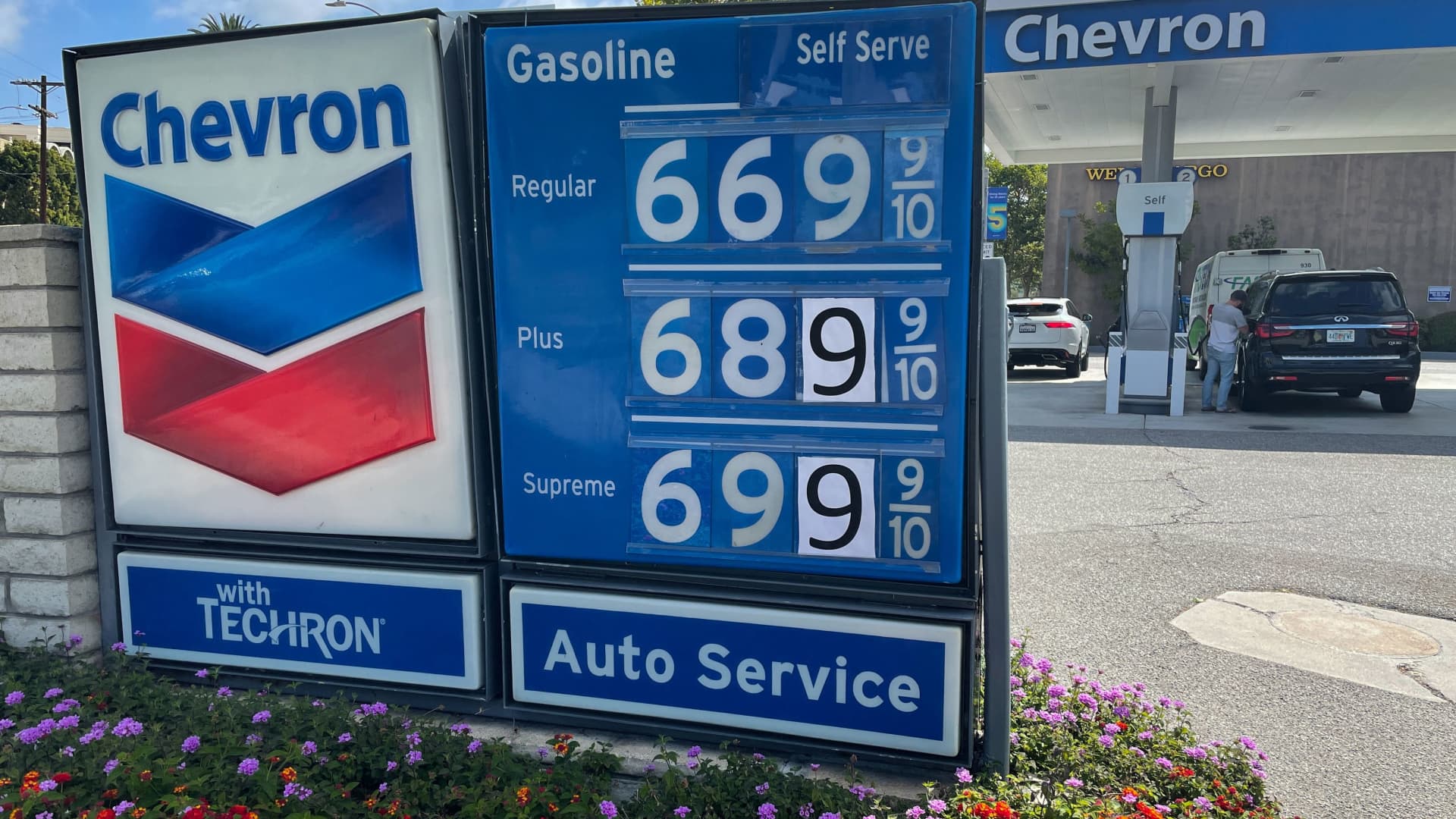Club holding Chevron (CVX) reported strong quarterly results before the opening bell on Friday. The energy giant reported revenue of $68.76 billion, handily beating expectations of $59.42 billion. Adjusted earnings of $11.4 billion, or $5.82, per share for the quarter, exceeded the $5.06 per share consensus. Bottom line It was a very solid quarter from Chevron as the company is clearly realizing the benefits of higher energy prices. For investors, the investment thesis on the energy sector overall remains all about cash returns to shareholders — and on this front, Chevron really delivered. It raised the high-end of their share repurchase guidance range while adding that they plan to be running at that high-end rate in the third (current) quarter. We would never advocate chasing an 8% move higher like we’re seeing in the stock Friday and therefore reiterate our 2 rating . However, we were pleased with the quarterly results and continue to like shares — though as indicated by our 2 rating would wait for a pullback before adding — at roughly 10 times 2023 earnings estimates with a roughly 3.5% dividend yield. Companywide Q2 results In addition to the healthy headline results, operating cash flow of $13.8 billion for the second quarter outpaced expectations of $13.5 billion while free cash flow of $10.6 billion was largely in line. That robust cash flow generation allowed management to fund a higher-level of investment, pay down debt for the fifth consecutive quarter. and return over $5 billion to shareholders via dividends and buybacks. Management raised the high end of their annual share repurchase range to $15 billion from $10 billion previously, adding on the call that they expect to be running at a $15 billion rate in the third quarter (current quarter). On the call, the team said, “Net debt is well below our mid-cycle guidance range so we’ll continue buybacks even when the commodity cycle turns down and we’ll lever back up our balance sheet closer to that 20% to 25% guidance range.” Q2 revenue breakdown Chevron reports operations in two segments: Upstream, which is the exploration and production of crude oil and natural gas, and Downstream, which consists of the refining of crude oil as well as manufacturing and marketing. Upstream earnings came in at $8.56 billion, with about 39% of that coming from the U.S. and the remainder from international markets. Upstream earnings were up 133% versus the year ago period thanks to higher realized prices that were partially offset by higher operating expenses and an early contract termination. During the quarter, global upstream production of net oil-equivalents was 2.9 million barrels per day (bpd), largely in line with expectations, with U.S. production coming in at 1.17 million bpd and international production averaging 1.72 million bpd. Average realized prices, Chevron saw $89 and $102 per barrel of crude oil and natural gas liquids in the U.S. and internationally, respectively. This leads us to a weighted average realized price of somewhere in the range of $96.80 per barrel, slightly above the $94.10 the Street was anticipating. On the natural gas front, Chevron realized prices of $6.22 and $9.23 per thousand cubic feet in the U.S. and internationally, respectively. Once again, averaging this out on a weighted basis leads us to a globally realized price of about $8.03 per thousand cubic feet, about in line with estimates. Downstream earnings came in at $3.52 billion, with the U.S. accounting for $2.44 billion and international at $1.08 billion. In the U.S., Chevron benefited from improved profitability on refined product sales that were partially offset by lower earnings from its 50% stake in the Chevron Phillips Chemical Company, and higher operating expenses. International earnings benefited from improved profitability on refined product sales and a $144 million currency tailwind. (Jim Cramer’s Charitable Trust is long CVX. See here for a full list of the stocks.) As a subscriber to the CNBC Investing Club with Jim Cramer, you will receive a trade alert before Jim makes a trade. Jim waits 45 minutes after sending a trade alert before buying or selling a stock in his charitable trust’s portfolio. If Jim has talked about a stock on CNBC TV, he waits 72 hours after issuing the trade alert before executing the trade. THE ABOVE INVESTING CLUB INFORMATION IS SUBJECT TO OUR TERMS AND CONDITIONS AND PRIVACY POLICY , TOGETHER WITH OUR DISCLAIMER . NO FIDUCIARY OBLIGATION OR DUTY EXISTS, OR IS CREATED, BY VIRTUE OF YOUR RECEIPT OF ANY INFORMATION PROVIDED IN CONNECTION WITH THE INVESTING CLUB. NO SPECIFIC OUTCOME OR PROFIT IS GUARANTEED.
Gas prices are advertised at a Chevron station as rising inflation and oil costs affect the consumers in Los Angeles, California, June 13, 2022.
Lucy Nicholson | Reuters
This article was originally published by Cnbc.com. Read the original article here.
